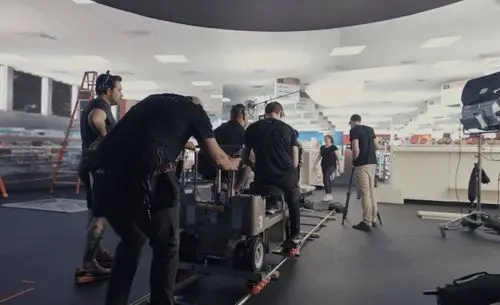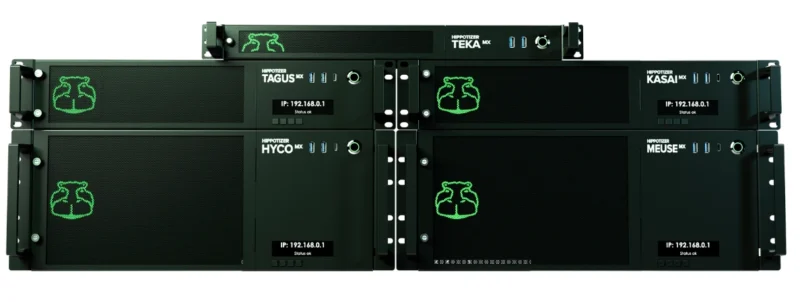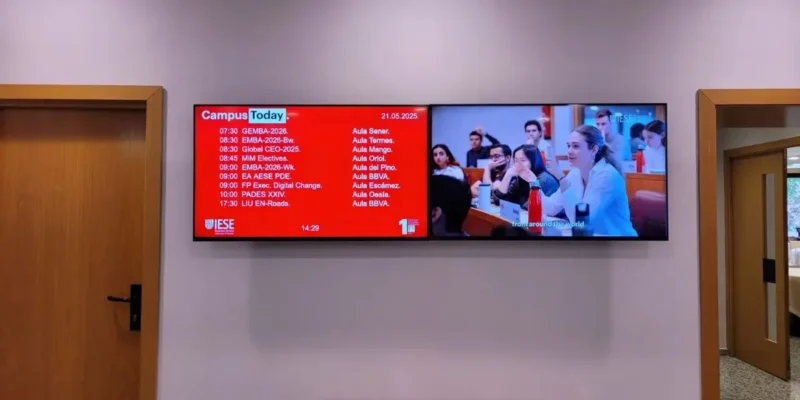Display Companies Need to Buy a Media Server Company!

I’m shocked that only one display company has been smart enough to buy a media server company. The irony? You can’t have one without the other. Everything else connected to a projector or monitor is optional — not required. But in the case of a media server, a display — whether it’s a projector, LED, LCD or OLED — is mandatory.
The display market is the coolest part of AV. When was the last time you went to a concert, saw a Broadway show, visited an arena or stadium to watch your favorite team, or attended an immersive experience — and weren’t in awe of what the projector or LED was doing?
No one mentions the audio unless it’s bad.

Don’t get me wrong — if I were Shure, I’d consider buying disguise or Dataton, for sure. They’re in a perfect position to synergistically work together.
But there’s no doubt that the best collaboration of all would be for one of the big, creative-oriented display companies — SNA Displays, Sony, LG, Absen, Nanolumens or Christie — to acquire a media server company. Ironically, Christie had a killer media server line but just sold the entire thing to a new German company. Why, why, why? They may end up regretting that move, especially considering media server market growth is guaranteed to be exponential compared to that of displays.
Media servers are used to drive all the content at nearly every live event you’ve attended over the past five-plus years. Most of the time, the content you see on the displays behind the stage, flanking the performers as IMAG, overhead visuals, LED floors, walls and ceilings — all of that is coming from one media server. These machines have massive pixel canvases (some even offer unlimited resolution based on processing power) that allow a single server to generate all the content and keep it perfectly timed.

This is also the same technology being used in virtual production today — where post-production has shifted to pre-production, and special effects are generated in real time on the LEDs that make up the physical stage. TV shows like “The Mandalorian,” “House of the Dragon,” “Silo,” “Ahsoka,” and commercials for brands like Jeep, McDonald’s and Polestar are all being shot using virtual production media servers.
Green Hippo (owned by tvONE and easily the best name in the game), Vu, disguise, Modulo Pi, Lux Machina, Dataton, ArKaos, Avolites, Analog Way — the list goes on. Every single one of them connects to a display (or dozens of them) via HDMI, DisplayPort or USB-C. It’s the perfect match.
And as displays continue to be treated more and more like commodities, now is the perfect time for the media server revolution to matter. No one’s price-shopping media servers the way they do displays. These servers are highly software-centric — many even host applications like Epic Games’ Unreal Engine — and they’re increasingly making their way into the corporate AV space. From lobbies to lecture halls, media servers are delivering non-linear content across multiple displays simultaneously.

In fact, tvONE has what’s likely the best example of an installer-friendly media server in the Calico Pro. I’m also a big fan of Vu Studio. Both are examples of the future of nearly everything in AV.
This is just the beginning of what’s sure to be explosive growth in the category, and it seems to me that display companies are perfectly positioned to care about this market — a market that’s famous for being connected to a ton of displays while generating pixel-perfect, mapped content.
So, what am I missing?




